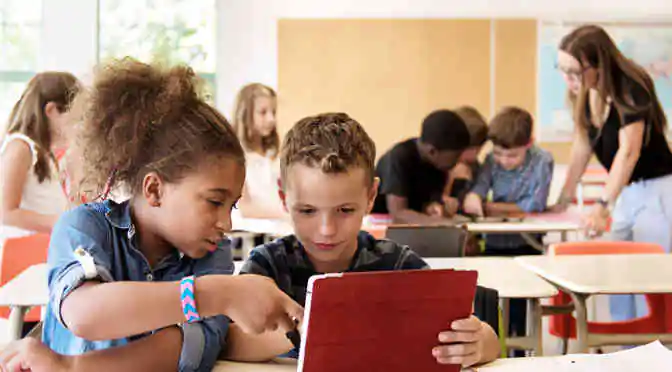The blended e-learning system has been a major disruptive innovation in the education industry. Often referred to as “new normal” in the education sector, blended learning is a practical solution for the looming shortage of teachers, bleak education budgets, and an increased demand for better teaching process.
Blended E-learning: changing the education paradigm from factory model to connected classrooms
“The factory model of education is the wrong model for the 21st century. Today our schools must prepare all students for college and careers – and do far more to personalize instruction and employ the smart use of technology”.
Arne Duncan (US Secretary of Education)
The central premise of the factory model of education reduced schools to mere test prep centers, wherein the students had to consume bits of information regardless of their skills, interests, and experiences. Not only did this model of education hamper the productivity of the students, but it also chipped away every element of innovation and creativity from their personalities.
With the entry of education technology, there has been an increased focus on building an education system that nourishes an individual’s creativity and natural interests. The blended learning approach, by integrating the traditional face-to-face activities with online elements, builds a learning process that is valuable for both students and teachers.
Top 3 Blended E-learning Models
1. Flipped classroom
This model does away with the need for students to be present in the classroom. Instead, they can take lectures through video podcasts or online platforms. Also, to maintain a two-way communication process, flipped classrooms provide students a common platform to interact and chat with the fellow students and the faculty. What makes this classroom experience different from the traditional classrooms is the presence of collaborative activities that involve team work and knowledge sharing.
Read: Could Flipped Classrooms Create Better Critical Thinkers?
2. Project-based learning
A dynamic classroom approach, project-based learning enables students to actively explore real-world problems and challenges. Its focus on collaborative efforts from students is one major factor for its immense popularity over the traditional teaching method. This “situated learning” process involves elements of role-playing, blended writing genres, authentic assignments and audience, and assessment of multiple skills.
3. Rotation model
One of the most common models in blended learning, a rotational model is where students rotate between online learning and whole-class discussion or projects. The key factor is that the teacher announces the time to rotate the subject, and all the students shift to their next activity in the course.
Read: Corporate and Academic Use will Help E-learning top US$130 billion by 2019
How can blended e-learning models be enhanced?
Several education technology solutions can play a vital role in enhancing the existing blended e-learning models. For instance, integrated systems can be used to support the seamless assimilation of online content from different sources into the student experience. Similarly, automation and analytics can be adopted to provide more personalized learning experiences for students and eliminate low value manual tasks like attendance and student assessment data entry.
Lastly, high quality dynamic content plays a critical role in enhancing the overall quality of blended e-learning models. Content that aligns with the national standards and engages students by offering uniquely personalized learning experiences is the ultimate method of enhancing blended e-learning models and building connected classrooms.



